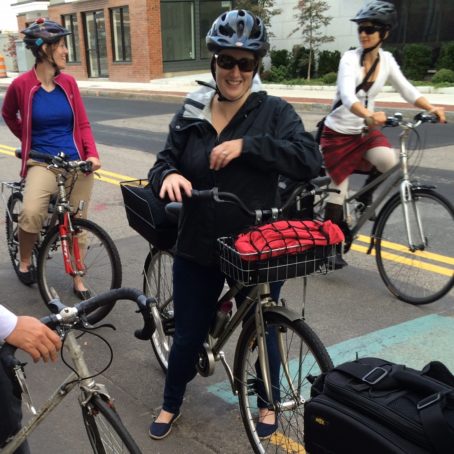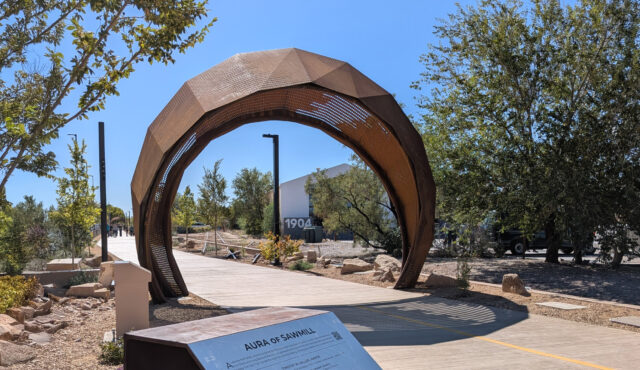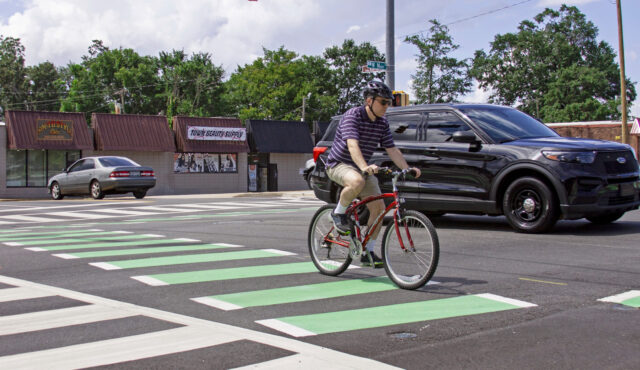February 19-25 is National Engineers Week! Toole Design Group is joining the celebration alongside the National Society of Professional Engineers, the American Society of Civil Engineers and the Institute of Transportation Engineers to showcase the transformative work our engineers do on active transportation projects. Check out the #TDGEngineers who are changing the way we experience public space on the go.
Want to see the places they’ve changed? Check out some of the #TDGDesigned projects we’ve engineered for communities around the country.
Want to become a #TDGEngineer? We’re hiring! Check out the Careers page for opportunities across the country.
#TDGEngineer: Jeremy Chrzan, P.E., PTOE, LEED AP, Senior Engineer | Associate
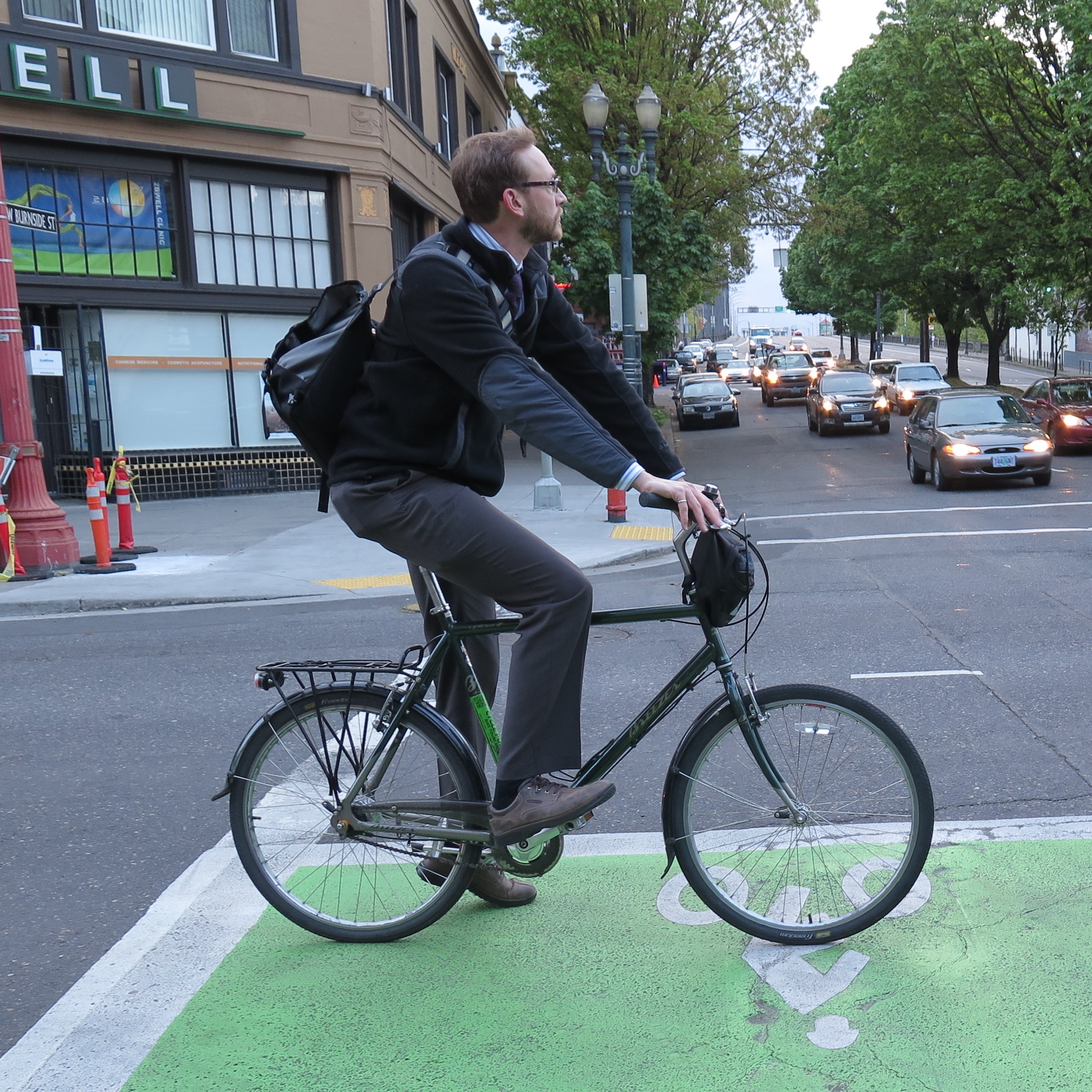
What is your background in the field?
I graduated from Drexel University with dual bachelor’s and master’s degrees in Civil Engineering, including concentrations in Structural Design and Engineering Geology. I began working as a coop/intern, and have 18 years of experience in engineering design for transportation, site development, structural, and municipal projects. I have also served as an adjunct professor at the University of Pennsylvania, teaching a graduate-level class in Urban Transit Systems and Technology.
Why did you become an engineer?
I became an engineer because I wanted to design the things I saw around me, but didn’t have the artistic ability of an architect. I enjoy working in a team with people who challenge me to find the best solution to complex problems. That’s what engineers do – we work to improve the world around us!
How do you bring a unique perspective to Toole Design?
I came to Toole Design Group with more than 15 years of experience in traditional roadway design. This really allows me to ground our practice in the fundamentals of large-scale infrastructure design – horizontal and vertical geometry, roadway and ADA grading, constructability, and maintenance of traffic. These skills are essential to properly design active transportation facilities in complex urban environments.
Name a fun fact about your technical experience.
I used to analyze and design 2000-foot tall television broadcast towers. Working at Toole Design is a bit of change from that experience.
#TDGEngineer: Amalia Leighton Cody, P.E., AICP, Seattle Office Director
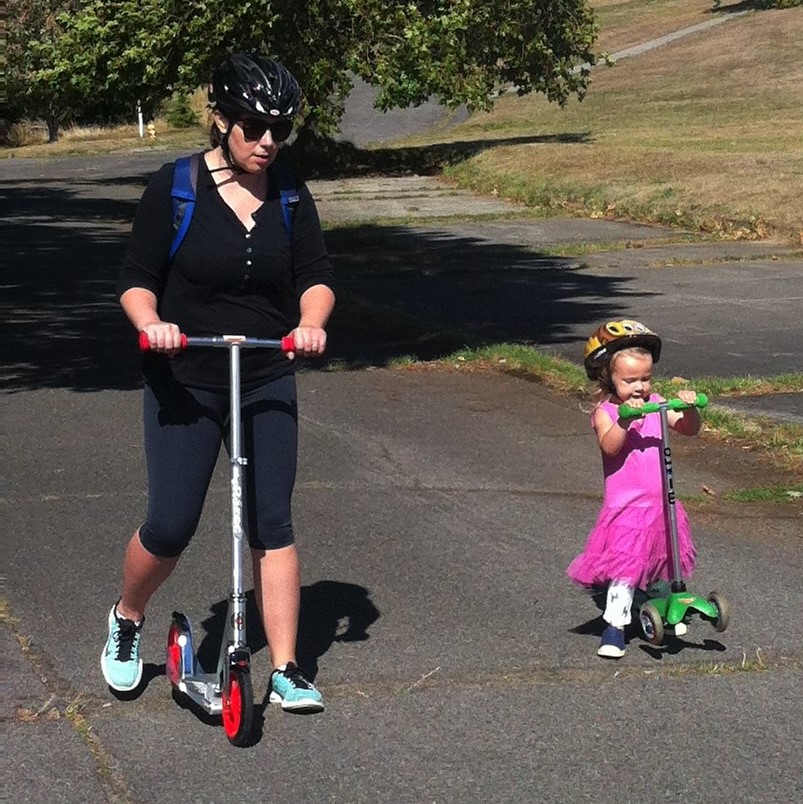
What is your background in the field?
I am both a civil engineer and a planner with 15 years of experience. I graduated from the University of Washington with a degree in Civil Engineering. My background is in active transportation planning, complete streets design and construction, and drainage and utility design in the ROW.
Why did you become an engineer?
Engineering allows me to work across disciplines to create projects that benefit people. As civil engineering is one of the oldest, most diverse types of engineering, I have been involved in a wide variety of projects. I love seeing the tangible results of the problem-solving work we do.
How do you bring a unique perspective to Toole Design?
As both an engineer and a planner, I find that the intersection between transportation and land use is critical. We need to be constantly thinking about how our transportation projects can benefit the communities that are using them, now and in the future. We should also think about the health outcomes of our work, and design our projects to be resilient to the climate and economic changes we may face in the future.
Name a fun fact about your technical experience.
Never doubt the importance of utilities! I came to transportation engineering via utility work in stormwater and wastewater management. Utility projects often tear up streets, and more often than not, communities want the opportunity to improve their streets during reconstruction. I have learned that the layout of underground utilities has a significant impact on what happens on the surface.
#TDGEngineer: Michelle Danila, P.E., PTOE, Senior Engineer | Associate
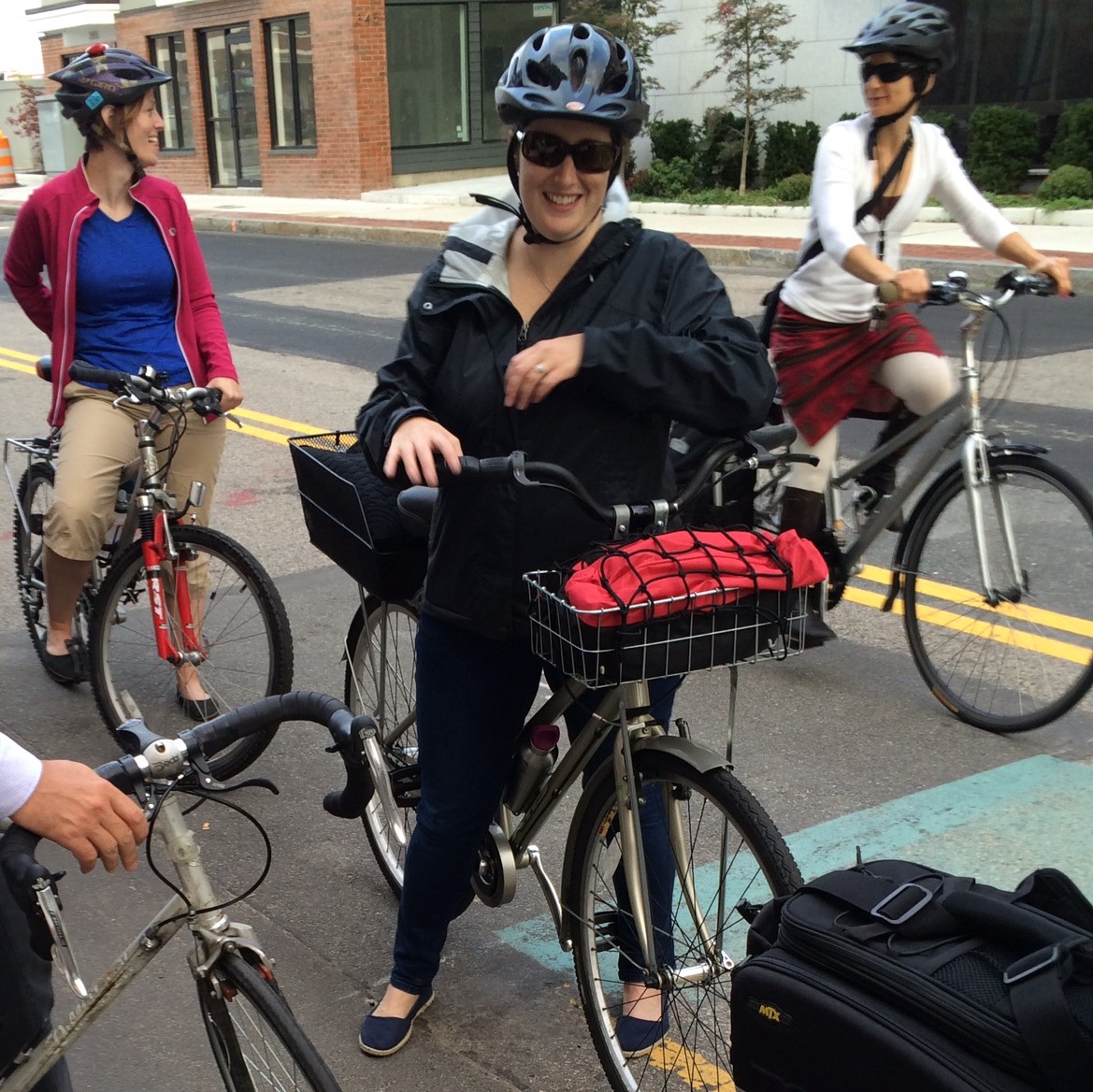 What is your background in the field?
What is your background in the field?
I have been a transportation engineer for 12 years. I received my Bachelor’s in Civil Engineering from Northeastern University and my Master’s in Civil Engineering from the University of Massachusetts-Amherst. I’m also the Secretary of the Institute for Transportation Engineering’s Pedestrian and Bicycle Council.
Why did you become an engineer?
I’ve always been told I was good at math and science, so it seemed natural to pursue a career that would use those skills. I chose transportation engineering as a profession, when I had to decide between working at a desk or taking a job on an outdoor site in January here in New England. I elected to stay indoors during the winter!
How do you bring a unique perspective to Toole Design?
My background is focused on designs that improve safety for all users, so that influences my work on every project. I am especially concerned with accessibility and safety for the most vulnerable users. That means I often design or review Americans with Disabilities Act (ADA)-compliant ramps, curb extensions, raised crosswalks, bike boxes and protected intersections – features that increase safety for people as they travel, regardless of mode.
Name a fun fact about your technical experience.
I once took a project from concept to final design in seven days.
#TDGEngineer: Kenneth Loen, P.E., Senior Engineer
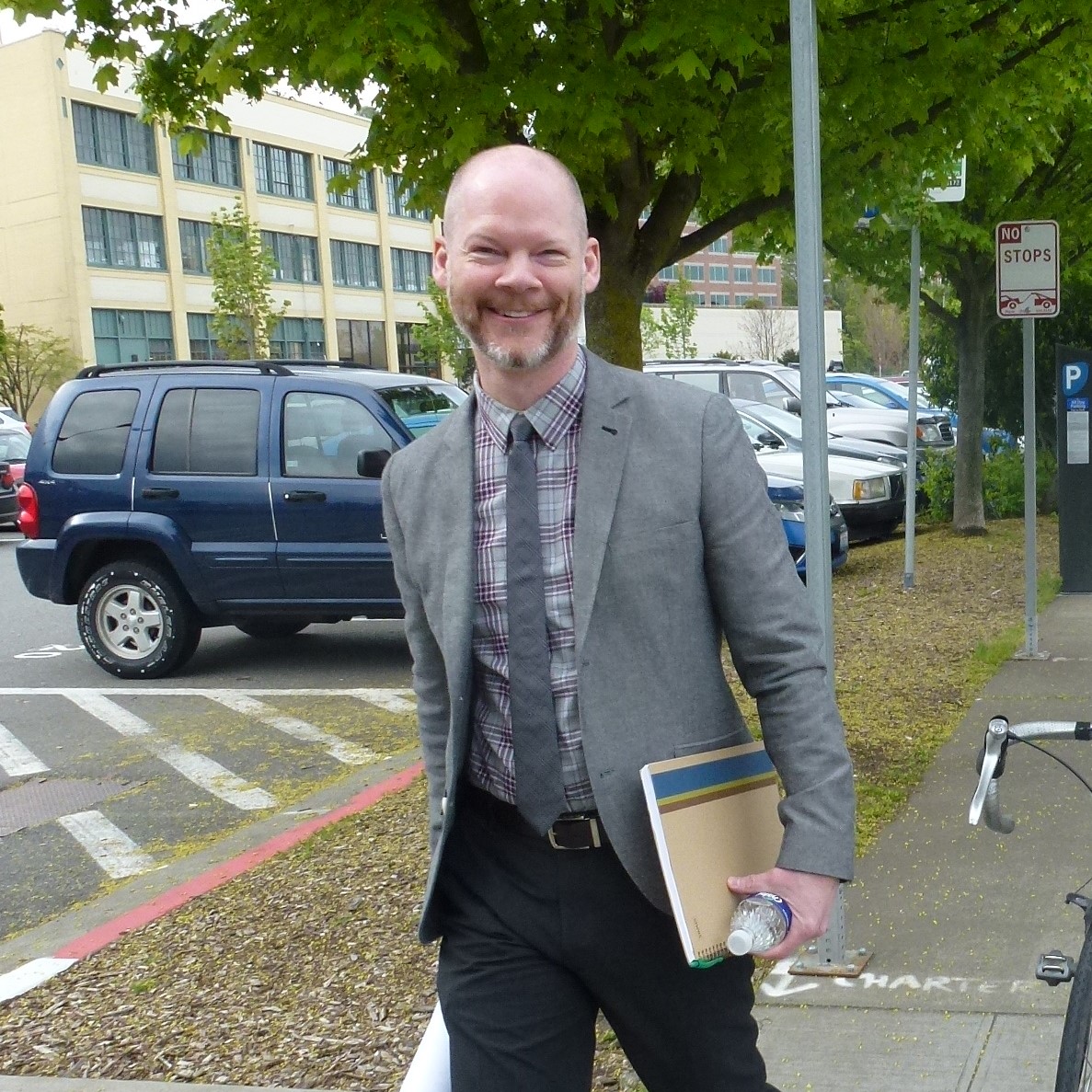 What is your background in the field?
What is your background in the field?
I’ve been working as an urban designer and civil engineer for 25 years. I have a Bachelor’s in Engineering Physics from Seattle Pacific University, a Master’s in Urban Planning from the University of Washington, and a Certificate in Urban Design from UW as well. I am interested in non-motorized transportation and use patterns in the public realm.
Why did you become an engineer?
I did not jump into civil engineering intentionally – it turns out that jobs in theoretical physics are few and far between! I got my start in what I thought would be a temporary job with the Washington State Department of Transportation. Sixteen years and one Civil Engineering P.E. license later, I realized I was quite happy to be here!
I have long been interested in the ways that civil engineers have a direct influence over the structure of our public space. Engineers have a tremendous impact on our built environment, positively or negatively. I try to use my powers for good, particularly when it comes to accommodating all users. I find pleasure in designing solutions to complex, complicated urban design challenges.
How do you bring a unique perspective to Toole Design?
I occasionally have the opportunity to apply my background in physics to a project or design concept. I designed one of the first modern roundabouts in Washington state. At that time there were no U.S. standards for roundabout design, so I conducted extensive research into international standards, leaning heavily on the UK and Australian standards, but in reverse. I had to perform custom deflection curve calculations based on direct side friction factor equations to make sure the designs were safe. Physics at work!
Name a fun fact about your technical experience.
I began my career in the early days of computer aided design and drafting (CADD). At that time, CADD stations were shared among several offices, and drafters had to make reservations for time slots to use the stations. Time slots were available 24 hours a day, and we worked through the night on many occasions. Every engineer should thank their company for providing software on more than a few computers, so we don’t have to do that anymore!
